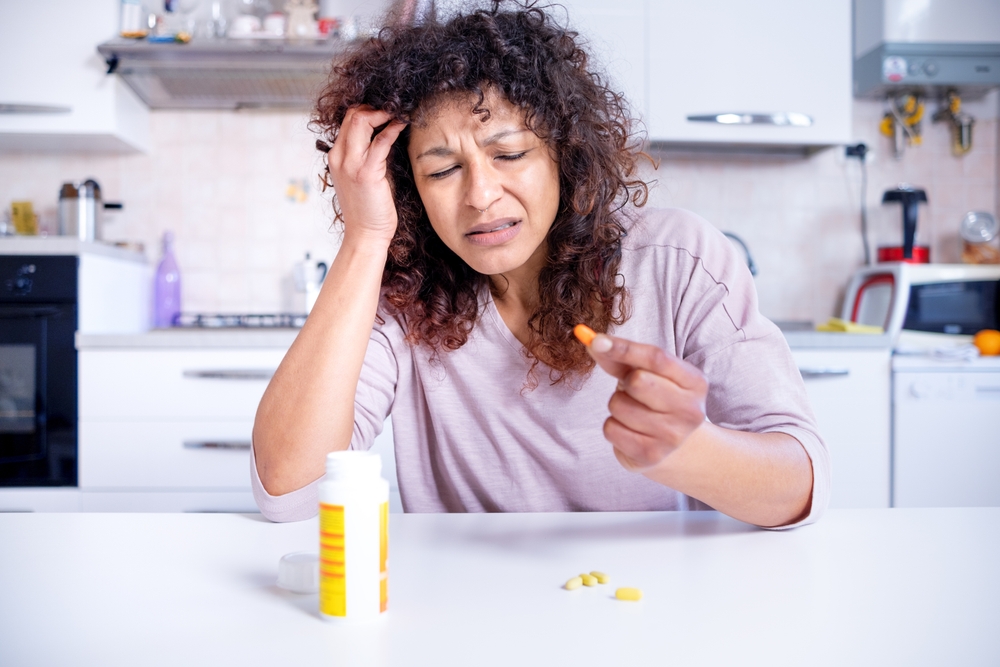You’ve tried every migraine medication your doctor prescribed, followed the instructions perfectly, and yet you’re still lying in a dark room with a throbbing head wondering why nothing works. The frustrating truth is that some migraines are essentially medication-resistant, not because the drugs are bad, but because the underlying triggers and mechanisms causing your pain are completely different from what the medications are designed to treat.
Traditional migraine medications work by targeting specific pathways in your brain and blood vessels, but they assume all migraines follow the same biological pattern. When your migraines are driven by different mechanisms like hormonal fluctuations, structural issues, or systemic inflammation, these standard treatments often fail completely.
The most maddening part is that medication-resistant migraines often get dismissed as psychological or exaggerated because doctors assume their prescribed treatments should work for everyone. You end up feeling like you’re failing at taking medication when actually the medication is failing to address your specific type of migraine.
Your migraine might not actually be a migraine
Many people diagnosed with migraines are actually experiencing headaches caused by completely different conditions that require entirely different treatment approaches. Cervicogenic headaches, which originate from neck problems, can create pain patterns identical to migraines but won’t respond to traditional migraine medications.
Tension headaches that have escalated into chronic daily pain can also mimic migraine symptoms while being driven by muscle tension and stress rather than the vascular and neurological changes that migraine medications target. Taking triptans for a tension headache is like using the wrong key for a lock.
Sinus pressure and inflammation can create headache patterns that feel exactly like migraines, complete with sensitivity to light and nausea, but these headaches need anti-inflammatory treatment rather than migraine-specific medications.
Rebound headaches from overusing pain medications create a vicious cycle where the very drugs meant to help your headaches are actually causing them. These medication-overuse headaches won’t respond to more medication and often require a complete break from all pain relievers to resolve.
Hormonal migraines follow completely different rules
Menstrual migraines and hormone-related headaches operate through mechanisms that standard migraine medications often can’t touch. These migraines are triggered by fluctuating estrogen levels rather than the typical migraine pathways, making them notoriously resistant to conventional treatments.
The timing of hormonal migraines is predictable but their intensity and duration can vary dramatically based on your individual hormone patterns. Birth control pills, pregnancy, perimenopause, and hormone replacement therapy all create unique hormonal environments that affect migraine patterns and medication effectiveness.
Estrogen withdrawal, which happens right before menstruation, triggers a cascade of neurological changes that create migraines through completely different pathways than stress-induced or food-triggered migraines. Triptans and other standard medications often provide minimal relief because they’re not addressing the root hormonal cause.
Some women find that their migraines respond better to hormone stabilization than to traditional migraine medications. Steady hormone levels through continuous birth control or bioidentical hormone therapy can prevent these migraines more effectively than trying to treat them after they start.
Inflammation-driven migraines need anti-inflammatory approaches
Some migraines are primarily inflammatory rather than vascular, meaning they’re caused by systemic inflammation in your body rather than changes in blood vessel dilation and constriction. These inflammatory migraines often don’t respond well to triptans or other vascular-targeting medications.
Food sensitivities and allergies can trigger inflammatory responses that manifest as migraines, but these headaches need elimination diets and anti-inflammatory treatments rather than traditional migraine medications. Your headache might be your immune system’s response to something you’re eating regularly.
Autoimmune conditions can cause chronic inflammation that triggers frequent migraines that are resistant to standard treatments. Conditions like lupus, rheumatoid arthritis, or inflammatory bowel disease create systemic inflammation that affects your nervous system and triggers headaches.
Environmental toxins and chemical sensitivities can also create inflammatory migraines that won’t respond to typical medications. Exposure to perfumes, cleaning chemicals, or air pollution might be triggering inflammatory responses that manifest as treatment-resistant headaches.
Structural problems require physical solutions
Many medication-resistant migraines are actually caused by structural issues in your neck, jaw, or spine that no amount of medication can fix. Cervical spine misalignments, TMJ disorders, and muscle tension patterns create headaches that need physical treatment rather than pharmaceutical intervention.
Poor posture from desk work or smartphone use creates muscle imbalances and nerve compression that can trigger headaches that feel exactly like migraines. These tension patterns need manual therapy, exercise, and ergonomic changes rather than migraine medications.
TMJ disorders and jaw clenching can refer pain to your head in patterns that mimic migraines completely. Dental appliances, jaw exercises, and stress management often provide better relief than migraine medications for these structurally-driven headaches.
Sleep position and pillow support affect your cervical spine alignment and can trigger headaches that persist despite medication. Sometimes changing your sleep setup provides more relief than any pharmaceutical intervention.
Your nervous system might be hypersensitive
Some people have nervous systems that are chronically hyperexcited, making them more susceptible to migraines while also making those migraines harder to treat with standard medications. This nervous system sensitivity can be genetic or developed through chronic stress and trauma.
Central sensitization occurs when your nervous system becomes so reactive that normal stimuli trigger pain responses. This hypersensitivity can make migraines more frequent and severe while making them less responsive to typical treatments.
Chronic stress and anxiety can keep your nervous system in a constant state of activation that makes migraine medications less effective. Your stress response system interferes with how your body processes and responds to pain medications.
Past trauma and PTSD can create changes in your nervous system that affect pain processing and medication effectiveness. The hypervigilance and chronic activation associated with trauma can make your migraines more severe and harder to treat with conventional approaches.
Medication timing and absorption issues sabotage treatment
The effectiveness of migraine medications depends heavily on when and how you take them, and many people unknowingly sabotage their treatment through poor timing or absorption problems. Taking medication too late in a migraine cycle often renders it ineffective regardless of the dose.
Gastroparesis, or delayed stomach emptying, is common during migraines and can prevent oral medications from being absorbed properly. Your stomach essentially shuts down during severe migraines, making pills sit undigested while your headache continues.
Dehydration during migraines affects how your body processes and distributes medications. If you’re not drinking enough fluids or you’re vomiting, medications can’t reach therapeutic levels in your bloodstream.
Taking migraine medications with certain foods or other drugs can interfere with absorption or effectiveness. Caffeine, alcohol, and even some supplements can change how your body processes migraine medications.
Alternative approaches that actually work for resistant migraines
When traditional medications fail, addressing the root causes often provides better relief than trying stronger drugs. Identifying and eliminating trigger foods through elimination diets can prevent migraines more effectively than treating them after they start.
Magnesium supplementation has strong evidence for migraine prevention, especially for people whose migraines don’t respond well to standard medications. Many people with treatment-resistant migraines are actually magnesium deficient.
Manual therapies like chiropractic care, massage, and physical therapy can address structural causes of headaches that medications can’t touch. These hands-on approaches work particularly well for migraines that have neck or jaw components.
Stress management techniques including meditation, biofeedback, and cognitive behavioral therapy can help regulate your nervous system and reduce migraine frequency and intensity. These approaches work especially well for stress-triggered migraines that don’t respond to medication.
Acupuncture has substantial research support for migraine prevention and can be particularly effective for people who don’t respond well to pharmaceutical treatments. The neurological effects of acupuncture seem to work through different pathways than traditional migraine medications.
Regular sleep schedules, consistent meal timing, and adequate hydration can prevent migraines more effectively than medication for some people. These lifestyle approaches address underlying triggers rather than just treating symptoms after they occur.
The key to treating medication-resistant migraines is identifying what’s actually causing your headaches rather than assuming all migraines are the same and should respond to the same treatments.














